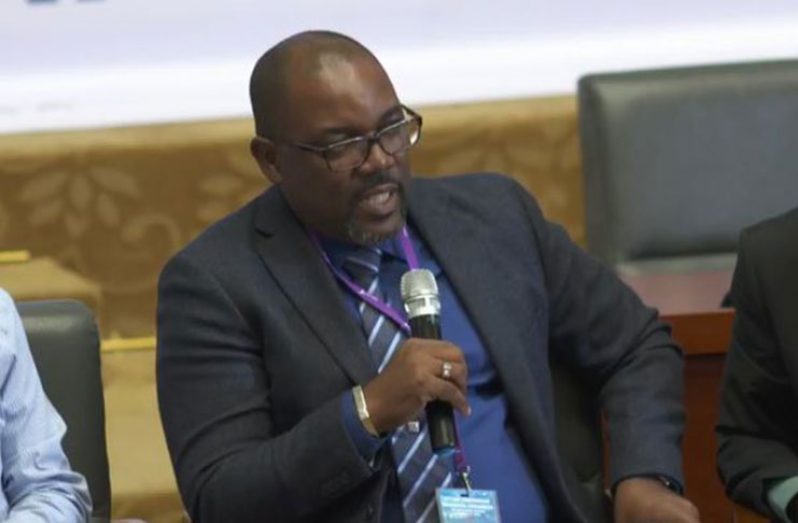– system being created by talented Guyanese engineers
GENERAL Manager of the Demerara Harbour Bridge Corporation (DHBC), Rawlston Adams, has announced that the corporation has just completed its first round of testing for automated toll collection in Guyana.
He made the announcement on Friday while on a panel of engineering experts at the 8th International Road Federation (IRF) Caribbean Regional Congress in Guyana.
“We’re now at the point where we’ve just finished our first phase of testing in respect to automated toll collection. It’s the very first time that automated toll collection will be used in Guyana and we’ve just finished our first round of testing,” Adams stated.
Earlier in the year, the bridge corporation announced its collaboration with Smartware Solutions to create the automated toll system that will serve to improve traffic management and accountability.
It will allow vehicular users to purchase credit to pay for tolls, rather than utilising physical cash.
With vehicular traffic over the Demerara Harbour Bridge increasing in recent years, the corporation saw the need to improve receipt distribution and the collection system, which generally contributes to the slowing of traffic.
With plans towards this end progressing, Adams assured the audience that Guyana is slowly but surely heading in the right direction and towards the use of disruptive technology.
He was keen to add that the software being used to develop the automated toll system is being created by talented Guyanese engineers.
“Our first automated toll-collection system in Guyana is developed by our locals through our IT persons,” he said.
His announcement came even as Project Manager at Surveying and Project Management Inc, Joel Trotman, impressed upon the panel, the need for Guyana to begin thinking beyond the construction of roads to the construction of smart infrastructure.
“We’re at a very unique position where we can now do quantum leaps, because we’re now saddled with old technology; we don’t have any technology at all, so we can now move to the next level,” Trotman said.
“We cannot expand some of our urban infrastructure anymore because widening roads and all of that wouldn’t make any sense, because there’s no space to do it. We need to look at how we can optimise what we have by introducing smart technology into the system.”
The project manager had also called for greater collaboration within the road transport sector so that equipment, such as CCTV cameras are not only used for the monitoring of traffic, but to gathering information origin and destination.
In this regard, Adams stated that collaboration ongoing between the bridge corporation and the Ministry of Public Infrastructure will see the optimal utilisation of the traffic CCTV cameras.
“We’ve just taken over the responsibility for managing the cameras on the overpasses and one of the things we’re working [on] with the Ministry of Public Infrastructure, is to share those information with respect to the collection of the videos. They have the software to do the traffic council and that information will be shared with the Ministry of Public Infrastructure, because we intend to add some additional cameras,” he said.
Meanwhile, on the issue of security, Adams stated that collaboration with the Guyana Police Force (GPF) will allow this information to be shared for their use.



.jpg)








